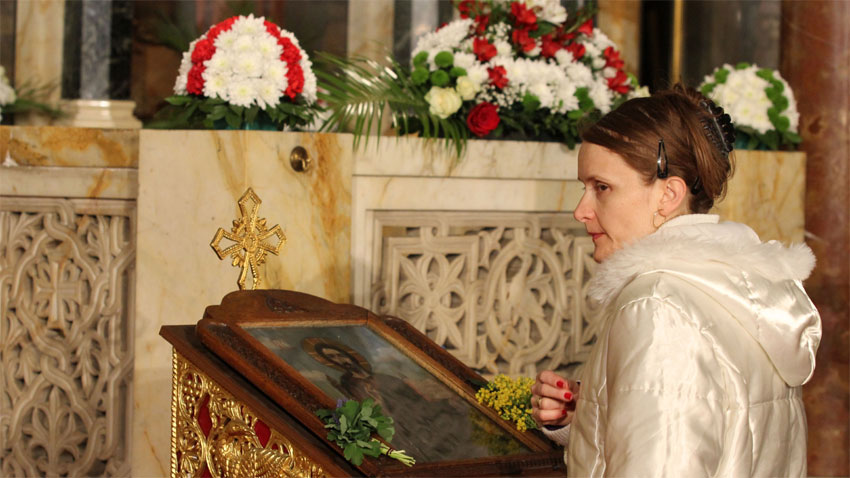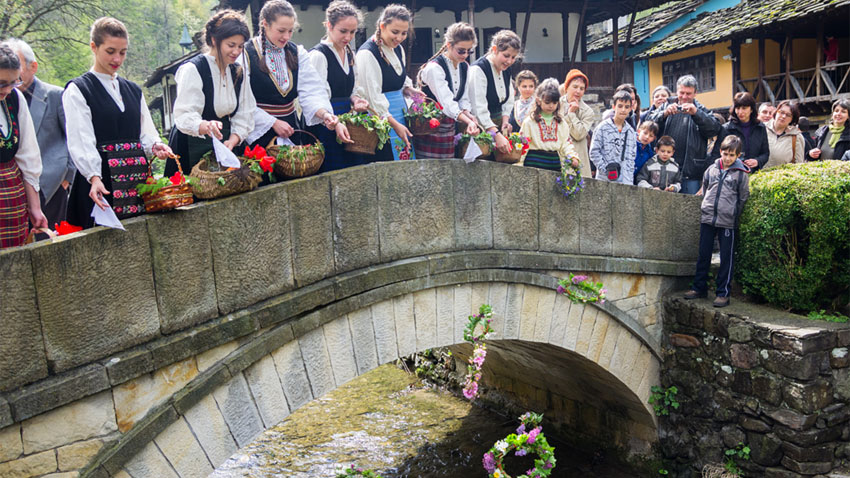Day after Lazarus Saturday and a week before Easter, Palm Sunday (“Tsvetnitsa”) comes - a spring holiday, devoted to reviving nature and its life-giving power. In the church calendar, this holiday is dedicated to the entrance of Christ in Jerusalem, where He was welcomed with laurel and olive branches, days before being crucified. The day is marked by Orthodox, Catholic and Protestant Chirstians.

In Bulgaria it is also called Vrubnitza, Flower Sunday, Kuklinden. Traditionally, in the morning, there is a festive church service, from which people leave carrying blessed willow branches, geranium and flowers that they place in front of an icon in home and atthe front door. In the past they used to keep the willow branch because of the belief in the powers of the twig to protect against diseases and disasters. In the spring and summer, when a storm came, people brought the wreath in the yard and looked through it to the clouds, with the hope that skies would clear. People also believed lighting part of the twig would prevent thunderstorms. Holding a willow stick taken from the church, people took cows to their first spring grazing in order for them to be healthy.
Special loaves of bread are bakedonVrabnica, which are part of bride rituals. Folk rituals end with the custom of “lazaruvane”. In the morning young brides as well as unmarried girls bring wreaths of willow twigs, flowers, and little loaves of bread, called “kukla”. The girls put the ritual objects in the river and watch whose wreath or bread will be the fastest and taken further by the flow of water. The winner enjoys special attention from the others.
The Lents are not over, but because of the significance of the day, fish is allowed to be consumed. The tradition does not allow people to dance “horo,” that has the chain of people closed and forming a circle. Only “Buenek” is danced – a lively open horo dance, accompanied by a song. People dance to the right and the chain is led by a young woman.

Today the holiday continues to be celebrated throughout the country. Willow twigs and flowers decorate homes and churches. Most festive is the mood in the homes of the great number of people bearing a name of a flower, a tree, or a plant.
English: Alexander Markov
Photos: archiveEight days before Easter, we celebrate Lazarus Saturday (St. Lazarus Day). It is the first of the three major Christian feasts associated with the miracle of the Resurrection and is followed by Palm Sunday and Easter. St. Lazarus Day is celebrated..
The Bulgarian village of Turia at the southern foothill of the Balkan Range is welcoming over a thousand participants in the Masquerade Games "Old Men in Turia". This year's edition of the festival on 30 March will feature 28 mummers' groups from all..
"In a vast region in northern Bulgaria, St. Todor is somehow perceived as a demonic character... He visited gatherings of unmarried girls, which were prohibited during that period; he acquired the appearance of a young bachelor, but distinguishable by..
Halva, this sweet temptation with an oriental twist, is a welcome delicacy on the Bulgarian table, especially on holidays. Judging by the descriptions of..

+359 2 9336 661
